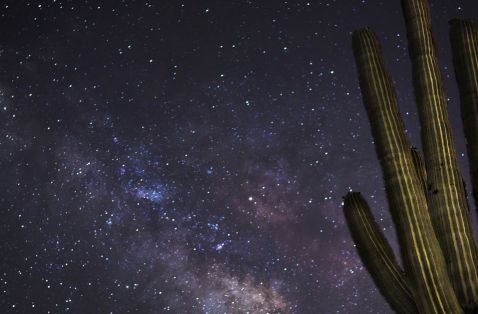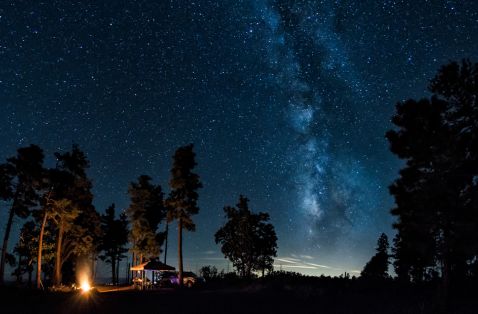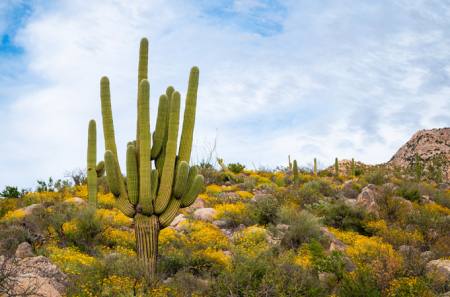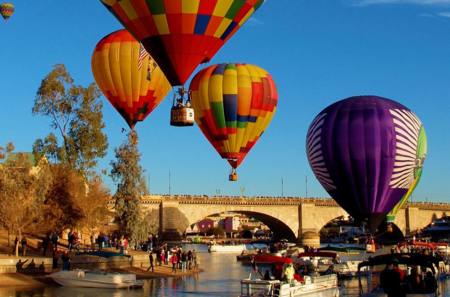7 Places to Enjoy Arizona’s Dark Skies
Clear skies, diverse landscapes and low humidity make Arizona a prime location for stargazing. Wondering where to go to see celestial wonders? Here are seven Arizona destinations that offer stunning starry sights, plus top tips from photographers for capturing the beauty of the evening sky.
Arizona has 19 locations designated as International Dark Sky Places, including Flagstaff, the first-ever Dark Sky Community. These spots are recognized for their commitment to preserve and protect the natural darkness of the night sky.
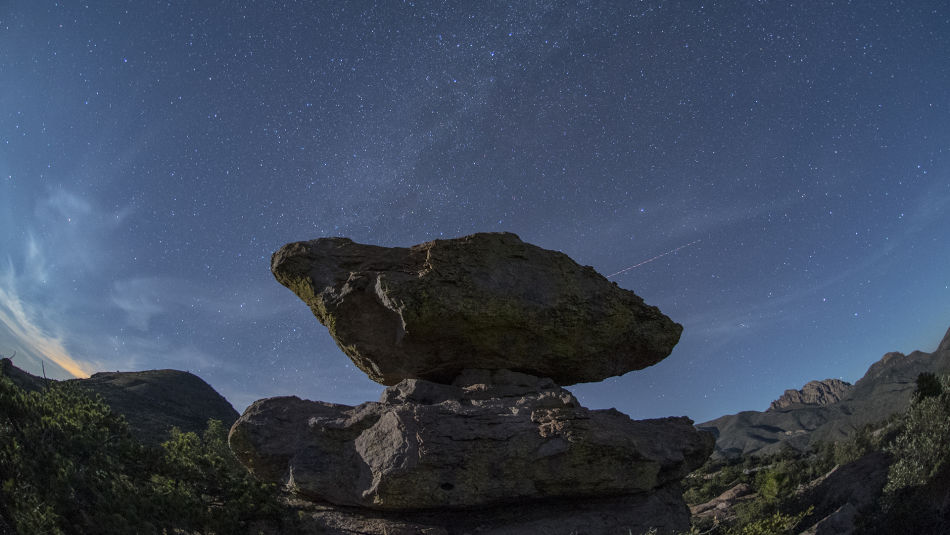
Chiricahua National Monument
Chiricahua National Monument offers visitors a remote immersion in the Sonoran and Chihuahuan deserts. Thanks to little to no light pollution in the isolated region, the monument earned its International Dark Sky designation in 2021. For unobstructed star views, the best vantage points are from Faraway Ranch and Echo Canyon parking lots.
Fountain Hills
Northeast of Phoenix metro, the town of Fountain Hills is protected from the bright lights of its big-city neighbor by the McDowell Mountains. Stargazers flock to Fountain Park, Four Peaks Park, Golden Eagle Park and Desert Vista Park (provided the ball field lights are off). Fountain Hills also hosts an annual dark sky festival in March.
Kitt Peak Observatory
Founded in 1958, Kitt Peak Observatory is located about 60 miles southwest of Tucson and is home to 22 telescopes and two radio telescopes, making it one of the largest collections of astronomy instruments in the Northern Hemisphere. The observatory is open to the public for tours, plus star viewing through three telescopes. Reservations required.
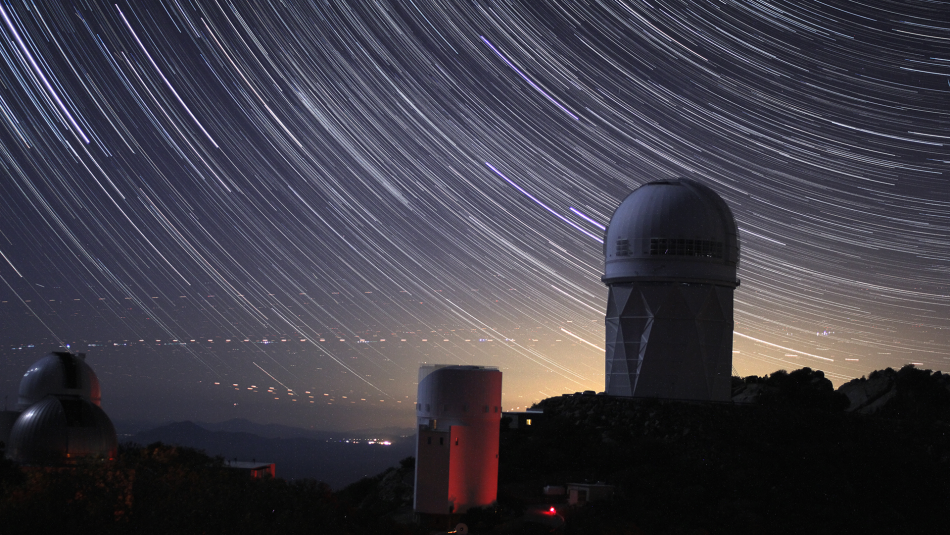
Lowell Observatory
Flagstaff’s Lowell Observatory — where Pluto was discovered — sits atop Mars Hill at an elevation of 7,200 feet, which means it’s an ideal spot to soak up Flagstaff’s inky skies. In addition to several options for stargazing via telescope, Lowell also offers solar viewing, historical tours including one featuring Pluto’s discovery, science talks and interactive exhibits.
Mount Graham International Observatory
Mount Graham International Observatory perches on the 10,720-foot peak of the Pinaleño Mountains in Safford and houses three telescopes, including the world’s most powerful telescope. There’s also the Vatican Advanced Technology Telescope and the most accurate radio telescope, the Heinrich Hertz Submillimeter. The observatory is open mid-May to October, and visits require registration in advance.
Oracle State Park
The Milky Way is completely visible at Oracle State Park, which was designated an International Dark Sky Park in 2014. Though it’s situated nearby to Tucson, the Santa Catalina Mountains envelop the park, blocking nearly all city glow. And thanks to its remote location, Oracle is one of the least-visited state parks, which lends itself to spectacular night skies.
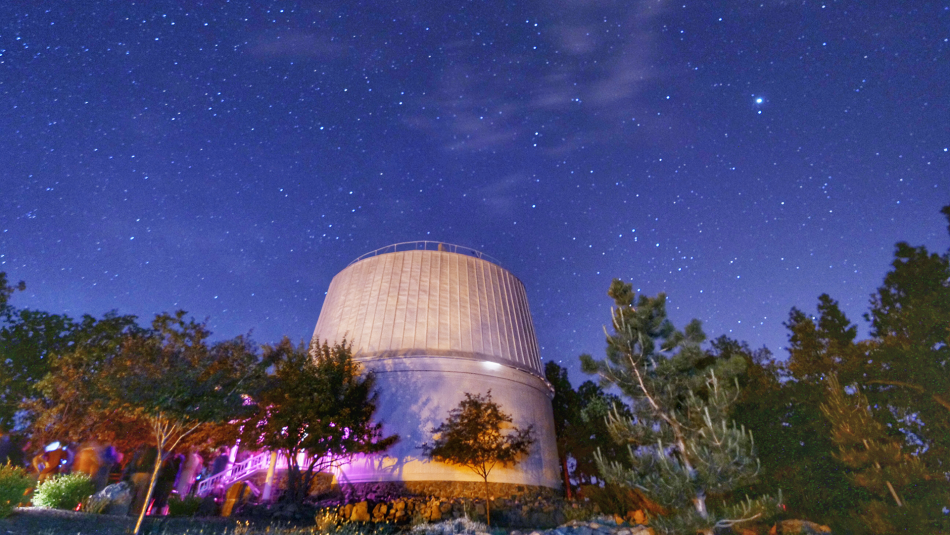
Tonto National Monument
Overlooking Roosevelt Lake, Tonto National Monument sits under skies so clear you can see millions of stars, plus other celestial bodies, without a telescope — something modern-day visitors share with the Salado people who called this area home 700 years ago. The monument received its International Dark Sky designation in 2019. Although Tonto National Monument closes daily at 4 p.m., keep an eye out on their website for ongoing Dark Sky related events!
Night sky photography: tips and tricks
Rick D’Elia, an Arizona-based photographer for nearly 50 years, and Jared C. Rygg, another Arizona-based photographer, share their suggestions for how to take a quality photo of the stars and planets.
D’Elia’s first recommendation: Invest in a stable tripod.
“The kind of tripod you purchase depends on the weight of your camera,” says D’Elia. The bigger the lens, the beefier the tripod. “You need something with three legs, one that doesn’t shake when you touch it.”
Rygg agrees. “Stabilizing your shot with a tripod is key to an unblurry nighttime photograph,” he says.
He also emphasizes focusing on shutter speed.
“Depending on how clear the night sky is and how far away from city lights you are, your shutter speed could be set to anywhere between 5 to 30 seconds,” says Rygg. “Experiment with the setting. Start low and increase the seconds as you go.”
Rygg adds that keeping a low aperture is also important, as well as adjusting the ISO speed. Rygg suggests that beginners start with an ISO range of 800-4,000. D’Elia notes that photographers shouldn’t be afraid to experiment. Playing and practicing with the camera helps newbies discover the best way to use the equipment. Keeping a journal and noting the specifics of good shots also helps photographers know what to do for future photography excursions.
One final suggestion: Be sure to download the corresponding app for the camera that will allow you to adjust settings without touching the equipment.
And what about camera phones? Typically the newer the phone, the better the lens. However, D’Elia cautions that “the lenses are pretty wide on phones and stars don’t show up as well.”
Stargazing in Arizona
Dark Skies
Discover how a state synonymous with sunshine and blue skies is equally spectacular when the stars come out.
Outdoor Adventures
Arizona’s Starry Nights
Arizona has long fought against "light pollution" - city glare that obscures the night sky. The Dark Skies Movement is headquartered in Tucson,...
Oracle State Park
This tiny state park north of Tucson makes a big impression with its colorful backstory.
Outdoor Adventures
Stay & Stargaze
View astonishing starry skies at these unique accommodations throughout the state that offer stellar stargazing opportunities.


